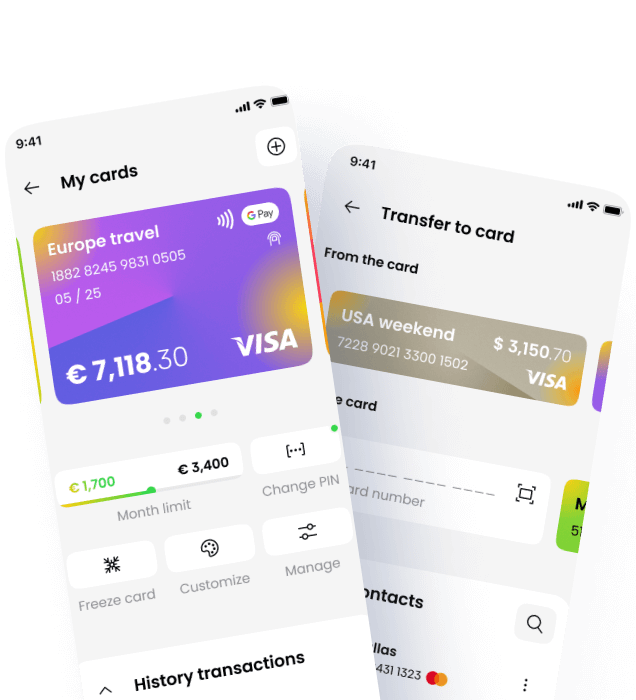The Merchant of Record (MoR) model has long been the go-to solution for businesses expanding internationally. It offers a convenient, all-in-one approach to handling payments, compliance, tax, and risk. But as global commerce matures, a new trend is emerging: unbundling the MoR.Rather than relying on a single provider to manage everything, businesses are increasingly choosing to modularisetheir payment stack—selecting …
Unbundling the Merchant of Record Model: A New Era in Global Payments

Payments in the Channel
The Merchant of Record (MoR) model has long been the go-to solution for businesses expanding internationally. It offers a convenient, all-in-one approach to handling payments, compliance, tax, and risk. But as global commerce matures, a new trend is emerging: unbundling the MoR.
Rather than relying on a single provider to manage everything, businesses are increasingly choosing to modularisetheir payment stack—selecting best-in-class tools for each function. This shift is reshaping how companies approach global payments, compliance, and customer experience.
In this blog, we’ll explore what unbundling the MoR means, why it’s happening, and how businesses can take advantage of this new flexibility without sacrificing compliance or scalability.
What Is the Traditional MoR Model?
In the traditional MoR setup, a third-party provider becomes the legal seller of your goods or services. They:
- Process payments
- Handle tax collection and remittance
- Manage fraud and chargebacks
- Ensure PCI compliance
- Often provide customer support
This model is especially popular with:
- SaaS platforms
- Marketplaces
- Digital goods providers
- Businesses entering new markets without local entities
It’s a “done-for-you” approach that simplifies global expansion—but at a cost.
Why the MoR Model Is Being Challenged
While the MoR model offers convenience, it also comes with limitations that are becoming harder to ignore:
1. Loss of Control
You don’t own the payment flow, the customer relationship, or the data. This can limit your ability to optimise checkout, manage churn, or personalise experiences.
2. High Fees
MoR providers typically charge 3–10% of transaction value. For high-volume businesses, this can significantly erode margins.
3. Limited Flexibility
You’re tied to the MoR’s roadmap, integrations, and policies. Want to add a new payment method or change your tax logic? You may have to wait—or compromise.
4. Brand Dilution
Customers may see the MoR’s name on their bank statements, not yours. This can lead to confusion, disputes, or reduced trust.
Enter: The Unbundled MoR
Unbundling the MoR means decoupling the core functions traditionally handled by a single provider and managing them through specialised tools or partners. These functions include:
| Function | Traditional MoR | Unbundled Approach |
| Payment Processing | MoR platform | PSPs like Stripe, Adyen, Checkout.com |
| Tax Compliance | MoR handles VAT/GST | Avalara, TaxJar, Quaderno |
| Fraud Management | MoR’s internal tools | Sift, Riskified, Signifyd |
| Compliance | MoR ensures PCI, KYC | VGS, ComplyAdvantage, Alloy |
| Payouts | MoR remits funds | Payoneer, Wise, Trolley |
| Customer Support | MoR handles disputes | In-house or outsourced CX teams |
This modular approach gives businesses more control, better margins, and greater agility—but also requires more coordination.
Why Unbundling Is Gaining Momentum
1. Maturity of the Payments Ecosystem
The rise of APIs, orchestration platforms, and embedded finance tools makes it easier than ever to build a custom stack.
2. Demand for Customisation
Businesses want to tailor their checkout, fraud rules, and tax logic to specific markets and customer segments.
3. Regulatory Pressure
In some regions, regulators are scrutinising MoR models—especially in fintech and digital goods. Unbundling can offer more transparency and compliance.
4. Data Ownership
Owning your payment data enables better analytics, personalisation, and optimisation.
Who Should Consider Unbundling?
Unbundling isn’t for everyone. It’s best suited for businesses that:
- Have in-house technical and compliance capabilities
- Operate in multiple markets with significant volume
- Want to optimize margins and customer experience
- Are ready to invest in a more complex but scalable infrastructure
If you’re a startup entering your first international market, a full MoR might still be the right choice. But if you’re scaling fast and want more control, unbundling could be your next step.
How to Transition from MoR to Unbundled
Here’s a phased approach to making the shift:
Phase 1: Audit Your Current Stack
- What functions does your MoR handle?
- Where are the pain points (e.g., fees, flexibility, data access)?
- What tools or partners could replace each function?
Phase 2: Build a Modular Architecture
- Use a payment orchestration layer to connect multiple PSPs.
- Integrate tax, fraud, and compliance tools via API.
- Ensure your data flows are secure and compliant (e.g., PCI-DSS, GDPR).
Phase 3: Test in a Single Market
- Start with one region or product line.
- Monitor performance, conversion rates, and operational impact.
- Iterate before scaling globally.
Phase 4: Scale and Optimise
- Expand the unbundled model to other markets.
- Continuously evaluate new tools and partners.
- Use analytics to fine-tune your stack.
The Payments in the Channel Advantage
At Payments in the Channel, we help businesses navigate the transition from bundled to unbundled MoR. Whether you’re looking to:
- Reduce MoR fees
- Improve checkout performance
- Gain more control over tax and compliance
- Or simply future-proof your payments infrastructure
…we can help you design and implement a modular, scalable solution.
We also offer hybrid models—where you can use MoR in some markets and unbundled in others, depending on your needs.
Conclusion
The unbundling of the Merchant of Record model marks a major shift in how businesses approach global payments. It’s a move from convenience to control, from bundled to best-in-class.
While it requires more effort and coordination, the rewards are significant:
- Lower costs
- Better customer experience
- Greater agility
- Full ownership of your payment stack
As the global commerce landscape evolves, businesses that embrace this modular approach will be better positioned to scale, adapt, and lead.
Curious about unbundling your MoR model? Talk to us at Payments in the Channel to explore your options.
Learn more at (https://www.paymentsinthechannel.com)








